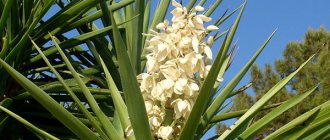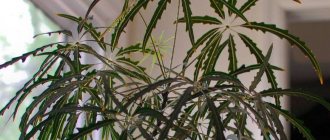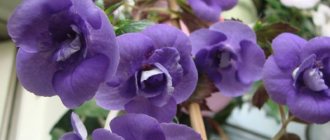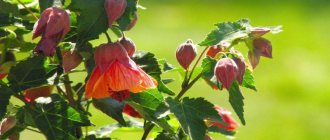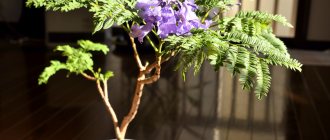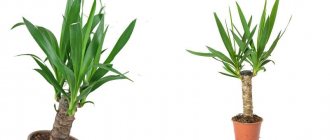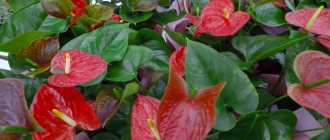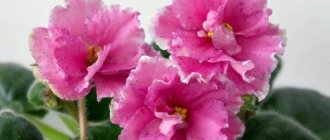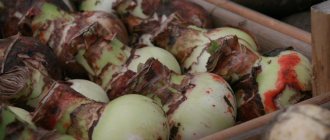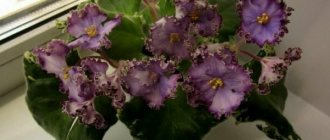Pandanus is a false palm from the Pandanaceae family.
The exotic screw palm is native to the tropics of the eastern hemisphere. Pandanus can be found in Vietnam, Madagascar and Java, Australia, the Marshall Islands, Thailand and the Philippines. It grows on sea coasts, river banks, and tropical rainforests.
Most often, pandanuses grow in coastal areas
In the natural environment, there are specimens whose sizes vary from small shrubs less than 1 m high to trees 20 m high. The trunk is thick, highly branched. Depending on the species, it may be smooth or warty. Aerial or stilted roots form a pyramid, holding the trunk and a massive crown of leaves and fruits. The upper part of the plant has one or more crowns of ribbon-like leaves, which may be spiny. The length of the leaf plates (depending on the type) ranges from 30 cm to 2 m, and the width varies from 1.5 cm to 10 cm.
In Southeast Asian countries such as Thailand and the Philippines, local people use the leaves of the plant for cooking. They have a pleasant herbal aroma and are used to wrap rice, meat or fish during cooking. Baskets are woven from pandanus leaves and filled into mattresses, and rafts are made from trunks.
The plant is dioecious. The male tree's flowers are long and fragrant, while the female pandanus bears round flowers that are also surrounded by bracts. The fruits are drupes that merge into one spherical fruit with a diameter of 10–20 cm, which looks like a pineapple. The color changes from green to bright orange or red as it ripens. The fruits can remain on the tree for more than 12 months.
Externally, the pandanus fruit resembles a pineapple
Pandanus Veitch, Sandera and other species
Of the 600 plant species found naturally, only a few are suitable for growing as potted plants.
- Veitch's pandanus (P. veitchii). A spiral palm with a shortened trunk and stilted roots that serve as supports. The leaf blades are twisted in a spiral along the shoot. The width of the leathery leaves, painted in a bright green shade, is 5–7 cm, and the length is 60–90 cm. Veitch's pandanus grows up to 1.5 m in height. The variegated form of this species is very impressive.
- Pandanus useful (P. utilis). A fairly large indoor plant that grows up to 2–3 m. Bright green leaves, covered at the edges with thorns, colored in a reddish tint, are arranged in a spiral. The leaf blades grow up to 1.5 m in length.
- Pandanus Sandera (P. sanderi). The leaf blades reach 80 cm in length and 5 cm in width, they are dark green with thin yellowish stripes and small spines along the edges.
- Pandanus Baptista. The plant is powerful, reaching a height of 2 m. Narrow and leathery leaves are decorated with yellow stripes. The edges of the leaf plates are smooth, without thorns.
- Roofing pandanus. This type of screw palm grows up to 1.5 m in height. Stilted (aerial) roots extend from a shortened trunk. The narrow leaves have serrated edges. The leaf blades are large, they grow up to 90 cm in length and up to 8 cm in width. The leathery leaves are colored green. The species got its name due to the fact that local residents use dense leaf plates as material for roofs of houses. They are also used to make ropes, baskets, hats and other household items.
Types in the photo
Pandanus Veitch is the most common species in indoor floriculture.
A distinctive feature of pandanus useful is the reddish thorns along the edges of the leaves.
The leaves of Pandanus Sander are decorated with thin yellowish stripes.
Pandanus Baptista - a spectacular plant with leaves decorated with yellow stripes
Pandanus roofing leaves are very durable, which is why they are used as a material for roofs.
Screw palm in nature - video
Botanical description
Pandanuses are tree-like evergreens, sometimes shrubs, reaching a height of 10-15 and sometimes 25 m in natural conditions. Externally, these plants look like vines or palm trees. Pandanus often form aerial roots, which eventually grow into the soil. With age, the lower part of the trunk of pandanus dies, and the plant is kept in an upright position precisely due to the aerial roots that have grown into the soil and become lignified, which are called stilts.
The leaves of pandanus are linear, xiphoid, slightly grooved, sharply serrated at the edges, up to 4 m long and up to 15 cm wide. They are located on the trunk in two spiral rows, which is why pandanus is called a screw tree or a screw palm. With age, the lower leaves fall off and scars remain in their place. The flowers of the plant are small, yellow, unisexual, without a perianth, collected in panicles or on cobs; however, pandanuses bloom infrequently in cultivation.
The screw palm is an unpretentious plant for spacious halls and winter gardens, which easily tolerates a lack of light and moisture, grows quickly, but requires a lot of space, so only young pandanuses can be kept in an apartment.
- The first and very important fertilizing of tomatoes - when and what to fertilize?
Living conditions depending on the season
| Season | Humidity | Content temperature | Lighting |
| Spring-summer | Pandanus tolerates dry indoor air well, but it is impossible to constantly keep the plant at low humidity; the flower may die. The optimal level should be 60%. This can be achieved by periodically spraying the leaves. | + 20–22 оС | The screw palm requires bright but diffused light. To avoid burns, the pandanus should be placed near the eastern or south-eastern window, curtained with tulle. Some species (with green leaf color) are shade-tolerant. A pot with green-leaved pandanus can also be placed in the back of the room. |
| Autumn-winter | With the onset of the heating season, the plant should be placed away from the radiators and the pot should be placed on a tray with wet expanded clay or pebbles. This technique will help maintain the required level of humidity. | + 18–20 oC. Can withstand short-term temperature drops of up to 12 degrees. | In winter, it is best to place the flower near a window facing South. If the plant is large and it is problematic to place it on the windowsill, then you should provide the pandanus with additional lighting using a phytolamp installed at a distance of 30–40 cm from the crown of the flower. |
How is pandan fruit eaten?
Pandanus can be eaten raw, as well as boiled and as part of various dishes.
Before eating the fruit raw, it should be divided into phalanges of seeds and only the inner part should be eaten (the skin of pandan is very hard). But it is worth noting that in any form the fruit is quite difficult to digest, as it consists of many hard fibers.
The calorie content and composition of the fruit depends on the type of pandanus, but on average 100 g of fresh fruit from this tree contains 295–320 kcal, as well as:
- carbohydrates - 17–19 g;
- proteins - 1.3–1.5 mg;
- fat - 0.7–1 mg.
The main component of this fruit is water (100 g of fruit contains 80 g of liquid), so pandan quenches thirst well.
Pandanus fruit is also often consumed boiled: the fruit is boiled with the peel, and then the pulp is used to make regular puree or cakes (mixed with flour).
Pandan is also used to prepare drinks: the soft part of the fruit is passed through a juicer, and then the pureed juice is diluted with water and palm syrup (to taste).
Jelly and marmalade are also prepared from this exotic fruit, or the juice is drunk fresh.
Pandan juice drink
Pandan Flatbread Recipe
To prepare you will need:
- 150 ml pandan puree;
- 300 g flour;
- 2–3 eggs;
- 1 tbsp. l. Sahara;
- 5 g baking powder.
Egg whites are separated from the yolks and beaten together with sugar until thick foam. Pandan puree is added to the resulting mass, and after mixing, flour and baking powder are sifted into it. From the prepared batter, cakes are baked in a frying pan (like pancakes). They are served with butter.
Photo of pandan cakes
The nuances of caring for pandanus
The plant is quite unpretentious, but in order to achieve rapid growth and a spectacular appearance, it is necessary to take into account several features.
Watering
The screw palm is quite moisture-loving, so the substrate in the pot should not be allowed to dry out completely. On warm days in spring and summer, I provide the pandanus with abundant watering, and in autumn and winter I reduce the amount of moisture by half. I make sure that the moisture does not stagnate in the pot; I drain excess water from the pan an hour after moistening.
Aerial roots also need moisture. To do this, they are covered with damp (but not wet) sphagnum moss.
Cold water should not be used to water the screw palm; it is best if it is at room temperature. It is not recommended to spray pandanus, as water that gets into the middle of the rosette can cause rot. But the air around the plant needs to be sprayed, especially on hot days, since the screw palm, like any other inhabitant of the tropics, needs high humidity.
Dust often accumulates on large leaves. They are wiped with a damp sponge from the base towards the tips. It is not recommended to give pandanus a shower, since, as already mentioned, water that gets into the base of the leaves can cause the plant to rot.
Top dressing
The beautiful pandanus requires large amounts of mineral and organic nutrients. In the spring and summer, it is fed twice a month with liquid complex fertilizers, which contain both mineral components and organic biostimulants. Root feeding with Ideal and Bona Forte gives good results. Half a cap of the product is diluted in 1.5 liters of settled water. The pandanus is watered with this nutrient liquid, and the procedure is carried out an hour after watering with ordinary water.
A special concentrated fertilizer for ficus and palm trees is perfect for feeding pandanus.
Rest period
Pandanus does not have a clearly defined dormant period; it continues to grow even in winter. But during periods of short daylight hours, the plant should be illuminated with a fluorescent lamp. Pandanus does not tolerate coolness well, so it is best to maintain a temperature of around +20 °C.
Transplantation and propagation
Pandanus grows quickly, even rapidly. Therefore, young palm trees require replanting every year. It is enough to move adult plants once every 3 years. When carrying out the procedure, it is necessary to take into account the sensitivity of the roots. The flower is transplanted using the transshipment method, then sprinkled with fresh soil.
Advice: To prevent leaves from getting in the way or being damaged during transshipment, they are usually collected at the top and tied up, and released upon completion of the work.
Pandanus propagation is carried out in several ways:
- Seeds,
- cuttings,
- dividing the bush.
We recommend: Growing and caring for Crassula: what does the money tree like?
Each option is carried out differently. In the first case, it is very important to preserve the sprout. That is why it is first covered with glass or film. Ventilation is also necessary. After a month, shoots will definitely appear. Usually the seeds are planted in groups and separated after the formation of the first 2-3 leaves. Then the seedling is able to develop independently in the pot.
For propagation using cuttings, it is important to choose the right shoot - it must be from the side and long enough, at least 20 cm. The cut areas are covered with coal and dried. Then they are planted in a mixture of peat and sand. Similarly with seeds, you should cover them with glass or a bag, setting up a mini-greenhouse. It is necessary to regularly ventilate the seedlings and loosen the soil around them. Rooting usually takes about a month if a special stimulator is used. Without it - up to 2 months.
An adult plant can be divided. To be precise, a daughter rosette is separated from the parent palm tree when it has grown to 20 cm and has given its roots. To stimulate the development of the root system of children, you should cover it with damp sphagnum moss.
Possible problems during cultivation - table
| Problem | Cause | Elimination methods |
| The appearance of a brown tint on the tips of leaves |
|
|
| Yellowing of leaves |
|
|
| Loss of color intensity |
|
|
| Drying leaves | Burn from direct rays of the sun. | It is better to move the palm tree to a semi-shaded place. |
Pests
Pests can cause great damage to the screw palm. They lead to withering of the flower and deformation of the leaf plates.
| Pests | Symptoms | Reasons for appearance | Ways to get rid of pests |
| Shields |
| dry air |
|
| Spider mites |
| increased air humidity |
|
| Mealybugs |
| dry air | Soak a cotton swab in water, lather it, and remove pests and their secretions from all parts of the pandanus. |
Pests threatening pandanus - photo gallery
The presence of cobwebs on the reverse side of the leaf blades is the main sign of spider mite damage.
The characteristic white discharge on the leaves and trunk is the result of mealybug activity.
Pests hide under round brown shields
Plant properties
Keep in mind that a pandanus flower is, in fact, a whole living organism that needs careful care, and in severe stressful situations it may well die. However, the flower also has a number of positive aspects, such as:
- saturating the home with positive energy;
- improving brain function;
- stimulating sluggish and weakly active people to take action;
- in the tropics, the leaves of the flower are used for medicinal purposes, for example, the leaves are chewed for gum inflammation or to relieve toothaches.
